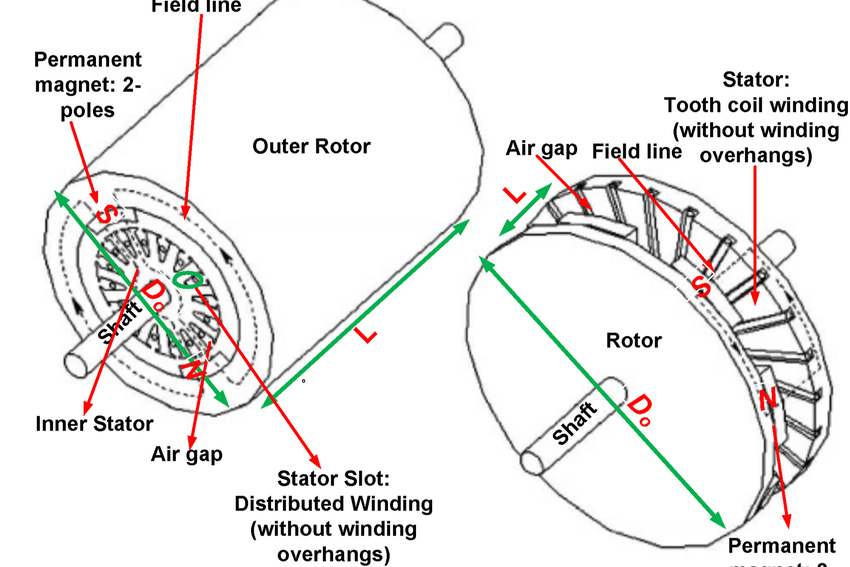Key Applications of Magnets in Audio Devices
Introduction
Magnets play a crucial role in the functioning of modern audio devices, from headphones and speakers to microphones and musical instruments. These applications harness the magnetic properties of materials to convert electrical signals into sound, and vice versa, enabling the high-quality audio experiences we rely on every day. Let’s learn about these applications of magnets in audio devices in this article.
How Magnets Work in Audio Devices
At the core of most audio devices is the principle of electromagnetic induction, a phenomenon where an electric current induces a magnetic field and a magnetic field induces an electric current. In audio systems, magnets interact with electric currents to produce vibrations in a diaphragm, which generate sound waves that we perceive as sound. These interactions are fundamental to both the output devices, like speakers and headphones, and the input devices, such as microphones.
Related reading: Neodymium Magnets in Electroacoustic Devices
Type 1: Speaker Magnets
Speakers are among the most common devices that rely on magnets. A typical loudspeaker consists of a diaphragm (or cone), a coil of wire, and a magnet. Here's how they work together:
- Permanent Magnets: Most speakers use permanent magnets, often made of neodymium or ferrite. These magnets create a stable magnetic field.
- Voice Coil: A voice coil, which is a wound coil of wire, is placed inside this magnetic field. When an audio signal (an electrical current) passes through the coil, it produces an electromagnetic field that interacts with the field of the permanent magnet.
- Diaphragm Movement: The alternating current in the coil causes it to move back and forth, which in turn vibrates the attached diaphragm or speaker cone. This movement creates sound waves corresponding to the original audio signal.

Neodymium magnets are especially popular in high-end audio equipment due to their strength relative to size, allowing for more compact designs without sacrificing sound quality. These magnets deliver more efficient performance, creating powerful audio in portable speakers, car audio systems, and professional sound systems.
Related reading: Speaker Magnets: Types, Applications, and Comparison
Type 2: Headphones and Earbuds
Magnets are equally critical in the design of headphones and earbuds. The basic operating principle is similar to that of speakers, but the components are miniaturized. Headphones typically use dynamic drivers that consist of:
- Magnet and Coil: Like speakers, headphones feature a magnet and a voice coil. When an electric current passes through the coil, the resulting magnetic field interacts with the permanent magnet to move a diaphragm and produce sound.
- Diaphragm: The small diaphragm within the earphones vibrates to produce sound waves that travel through the ear canal, allowing us to hear music, podcasts, or calls.

Again, neodymium magnets are favored for their high magnetic flux density, meaning they can produce more precise sound in a smaller space. This makes them ideal for use in high-quality headphones and in-ear monitors where clarity and fidelity are important. For noise-canceling headphones, magnets play an additional role by supporting the microphones used in active noise cancellation (ANC) systems, where external noise is detected and countered.
Type 3: Magnets in Microphones
Microphones, which are responsible for converting sound into electrical signals, also rely on magnets. Dynamic microphones in particular are based on electromagnetic principles:
- Dynamic Microphones: In a dynamic microphone, sound waves move a diaphragm, which is attached to a coil of wire positioned near a magnet. When the diaphragm moves in response to sound, the coil moves within the magnetic field, inducing an electrical current that mirrors the sound waves.
- Magnet Types: Ferrite and neodymium magnets are commonly used in microphones. Neodymium magnets are preferred for their strength and ability to generate a high level of signal output, making them ideal for professional audio applications, such as broadcasting, live performances, and recording studios.
By converting sound into electrical signals with minimal distortion, magnets in microphones help capture high-quality audio for use in music production, communication devices, and recording systems.
Type 4: Magnets in Musical Instruments
Certain musical instruments, especially electric guitars and keyboards, use magnets to produce sound. In electric guitars, for example, the pickups (which detect the vibrations of the strings) contain magnets:
- Magnetic Pickups: Magnets, typically made of alnico or ceramic, are placed under the guitar strings. When the strings vibrate, they disturb the magnetic field, inducing an electric signal in a coil of wire wrapped around the magnet.
- Signal Amplification: This electric signal is then sent to an amplifier, which converts it back into sound. The type of magnet used in pickups can affect the tone and output level of the guitar, allowing musicians to create diverse sound profiles.
Similarly, in digital keyboards and synthesizers, magnets are used in electronic sensors that detect key presses and convert them into sound or electronic signals that are amplified and played through speakers.
Type 5: Turntables and Record Players
Vinyl record enthusiasts are familiar with the use of magnets in turntables. In the cartridge of a record player, magnets play a vital role in converting the vibrations from the stylus (needle) into electrical signals:
- Moving Magnet Cartridges: In a moving magnet cartridge, a small magnet is attached to the stylus. As the stylus tracks the grooves of a record, it causes the magnet to move between coils of wire, inducing an electrical signal that is amplified to produce sound.
These systems are preferred by audiophiles for their warmth and rich audio reproduction, which is closely linked to the magnetic components used in the cartridge.
Conclusion
Magnets are an integral part of virtually all modern audio devices, from loudspeakers and headphones to microphones and musical instruments. Their ability to convert electrical energy into sound waves—and vice versa—underpins much of the audio technology we use today. As audio technology continues to evolve, magnets will remain a core component, ensuring the delivery of high-quality sound across a wide range of devices. For more high-quality magnet products, please check Stanford Magnets.















